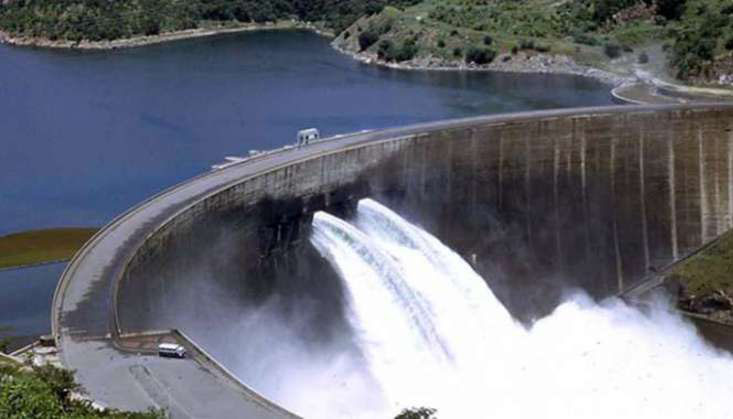
The Sunday Mail

Joshua Matanzima
WHERE is Kariba Dam and what purposes does it serve?
The 280-kilometre-long, man-made Lake Kariba is part of the Kariba Dam, which was built between 1955 and 1959 in the Zambezi River Basin between Zimbabwe and Zambia.
The dam provides hydroelectric power to the Kariba South Power Station on the Zimbabwean side and the Kariba North Power Station on the Zambian side.
These provide most of the electricity for the two nations.
The remote Kariba Dam, about five hours’ drive from Zimbabwe’s capital city, Harare, and a three-hour drive from Zambia’s capital, Lusaka, also supports fisheries, conservation, tourism and recreation.
Over 100 000 people live in Kariba town, and the Nyaminyami and Binga rural districts.
It is also a religious site; locals believe it shelters their ancestors and Nyaminyami, the river god.
Water levels have been falling. What are the causes?
Since the early 2010s, the El Niño weather pattern has induced droughts and heatwaves in the Zambezi region, causing a drop in the water levels in Lake Kariba.
EL Niño is an unusual warming of surface waters in the eastern tropical Pacific Ocean that brings hotter temperatures and much lower rainfall to Southern Africa for five months at a time.
By April 8, 2024, the Zambezi River Authority, which manages Lake Kariba, announced that water in the lake had dropped to 13,52 percent of its capacity.
Water levels in the lake fluctuate according to the rainfall; this time last year, the lake was 21,94 percent full, but levels dropped as low as 12 percent in 2015.
What are the four biggest effects on local communities?
Low water levels in Lake Kariba have had a huge impact on the people in the area.
The key areas of concern are:
Survival: Many people survive directly off the lake, by catching and selling fish. The drought reduces fish-spawning areas, which means fishers who live near Lake Kariba catch very few fish during times of drought. My research has found that during times of drought in Kariba, crocodiles take fish from the fishers’ nets and destroy the nets. In retaliation, fishers attack crocodiles with spears and logs, exposing themselves to crocodile attacks.
Human-wildlife conflict: The area is already a hotspot for human-wildlife conflict. A drop in the water levels results in increased competition over water resources between people and wild animals, resulting in human-wildlife conflict. Animals that normally drink water from far-away river estuaries start approaching the parts of the lake populated by humans. Clashes between elephants, buffaloes, baboons and lions on one hand and humans on the other increase as they have to share reduced waterscapes.
Poaching: There is also an increase in poaching as impala, kudu, waterbuck and duiker move closer to human settlements to seek water and people look for more sources of food and income due to the economic downturn caused by the drought.
Tourism: Numbers drop. Game drives along the lake to the estuaries — which have unique flora and fauna, and allow tourists to have a closer view of wild animals and birds — come to a standstill during times of drought. Tourist fishing in the estuaries dries up. The opening of the floodgates at the dam walls, which were a drawcard for tourism, stops as the water levels are too low for this.
Long walks to collect water: Water level reductions burden women and children from surrounding fishing camps and villages who fetch water for home use from the lake. In my research, residents of the area say water levels have dropped so much that fishing camps are now up to 2 kilometres further away from the lake than they were before the drought. Women and children from fishing camps have even been injured and killed by wild animals as they fetch water in the lake.
Trade is disrupted: Cross-border traders based in Kariba who do business between Zimbabwe and Zambia are also affected. Kariba traders often cross the border to sell fish in Zambia, but with low catches, this is no longer possible. Also, most traders depended on income from fishing to purchase goods from Zambia for resale in Zimbabwe.
What can the Government do to help?
Proactive measures are required to minimise harm to lives and livelihoods.
Over the long term, droughts could become more severe and Kariba Dam could stop producing as much power.
The Lake Kariba region is a very hot and windy area that can support both onshore and offshore wind turbines and solar parks.
The Government must plan for this so that local communities can have sustainable electricity with renewable energy projects that support alternative livelihoods.
The national parks authorities in both Zimbabwe and Zambia need to put in place robust measures to reduce human-wildlife conflicts.
This can be done by identifying areas of high animal activity at the lake and directing humans away from them.
Communities are also unaware of the relationship between a drop in water levels and human-wildlife conflict, and more awareness should be created about this.
The water-governing authorities in the Zambezi area should draw on local knowledge and practices in times of drought.
For example, the authorities could promote the rainmaking ceremonies by local traditional groups of the Tonga, Shangwe and Korekore.
These groups have lived in the area for centuries and believe water drops are a result of angry ancestral and water spirits, as well as Nyaminyami, the river god.
There is need for the governing authorities to fund more of such ceremonies as local communities lack money to organise the events.
Joshua Matanzima is a researcher at the University of Queensland.





